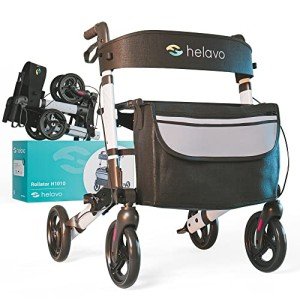This Is The History Of Non-Slip Walker In 10 Milestones
The Benefits of Non-Slip Walkers: Enhancing Mobility and Safety for All
As we navigate through the varied landscape of mobility help, one essential product stands apart: the non-slip walker. This important tool not only help those with restricted mobility but also promotes independence and safety. In this post, we will explore the benefits of non-slip walkers, the different types available, and what features to search for when picking the ideal walker. Along the way, we will answer frequently asked questions and provide insights that enhance understanding of this crucial mobility accessory.
Why Choose a Non-Slip Walker?
Non-slip walkers are particularly designed with safety in mind. Continuing and falls can trigger severe injuries, specifically for elderly people or those recovering from surgery. Integrating anti-slip features into a walker can considerably reduce the danger of mishaps, making it a vital option for anybody in requirement of assistance. Here are a few reasons a non-slip walker is a worthy investment:
- Enhanced Stability: Non-slip grips and rubberized wheels supply superior traction on various surface areas.
- Improved Safety: The design decreases the likelihood of slips, providing users self-confidence as they move.
- Increased Independence: Those who may have formerly counted on caretakers can regain some degree of autonomy.
- Versatile Design: Non-slip walkers can be customized to fit a variety of individual requirements and choices.
Types of Non-Slip Walkers
Non-slip walkers come in several designs, each tailored to accommodate different mobility requirements. Below is a comparison table highlighting the most common types of non-slip walkers offered:
Type of Walker
Features
Ideal For
Price Range
Standard Walker
Four legs, lightweight, rubber ideas
General usage, moderate assistance
₤ 50 – ₤ 100
Two-Wheeled Walker
2 front wheels, 2 rear legs with rubber ideas
People who need assistance but can walk
₤ 70 – ₤ 150
Rollator
Four wheels, braking system, seat alternative
Active people; offers a rest choice
₤ 100 – ₤ 250
Knee Walker
Designed for people with knee injuries
Short-term recovery from leg or foot injuries
₤ 80 – ₤ 200
Pediatric Walker
Smaller sized size, vibrant styles
Kids with mobility concerns
₤ 60 – ₤ 120
Elements to Consider When Choosing a Non-Slip Walker
Selecting the best non-slip walker can be an overwhelming task. Here are some elements to bear in mind when deciding:
- User's Weight and Height: Ensure that the walker supports the user's weight and fits their height.
- Kind of Surface: Consider where the walker will be mainly utilized (indoors vs. outdoors) to choose an appropriate tire setup.
- Mobility and Weight: If the walker requires to be carried, consider weight and foldability for convenience.
- Adjustability: Look for a walker that can be gotten used to the user's particular height needs, making sure convenience and safety.
- Additional Features: Some walkers include features such as built-in seats, storage baskets, or more advanced braking systems.
Additional Features of Non-Slip Walkers
While examining non-slip walkers, a number of additional features can improve user experience:
- Ergonomic Grip Handles: Soft and comfortable grips can reduce stress on the hands.
- Reflective Materials: Adding increased visibility can assist those who might be using the walker in low-light conditions.
- Adjustable Accessories: Consider options like cup holders, trays, or even oxygen tank holders for added benefit.
- Durability: Look for walkers built from high-quality products to ensure lasting usage.
Often Asked Questions (FAQs)
1. What is the primary difference between a standard walker and a rollator?
- A basic walker has four legs and requires the user to raise it with each step, whereas a rollator has wheels, permitting the user to push it along more easily.
2. Are non-slip walkers appropriate for outdoor use?
- Yes, numerous non-slip walkers are created for various surface areas. It's important to choose a model with ideal wheels for outdoor surface.
3. Can a non-slip walker be used by people who have had hip or knee surgery?
- Absolutely. Non-slip walkers supply stability and can be necessary for those recovering from such surgical treatments.
4. How do I adjust the height of a walker?
- A lot of walkers feature adjustable legs that enable you to change the height. Refer to the maker's standards for specific adjustment instructions.
5. Exists a weight limitation for non-slip walkers?
- Yes, each walker has actually a defined weight limitation. It is essential to thoroughly examine this detail before buying to guarantee safety.
6. Can I utilize a non-slip walker in shops or public locations?
- Yes, non-slip walkers are designed for usage in numerous environments. Just make sure the design you pick is maneuverable enough for confined areas.
Investing in a non-slip walker can offer users with boosted mobility, confidence, and self-reliance. The variety of styles and features readily available permits users to select a walker that best fits their unique needs. By considering elements such as weight capacity, adjustability, and additional features, one can guarantee that they or their liked ones are safe and comfortable.
For those looking for to regain their independence, non-slip walkers not just aid in mobility however also add to a more active way of life. If you or somebody you know might take advantage of a non-slip walker, make the effort to check out the choices offered— your journey towards increased safety and autonomy begins here!
